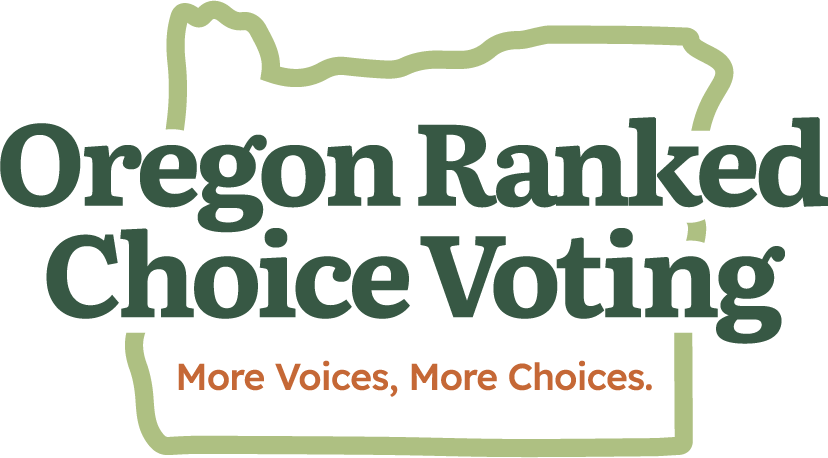Frequently Asked Questions
-
Ranked choice voting gives voters the option to rank candidates in order of preference: first choice, second choice, third choice, and so on.
If a candidate receives more than 50%, they win – like any other election. If not, the candidate with the fewest votes is defeated and ballots are instantly counted for a voter’s next choice until there’s a majority winner. Watch this video on how ranked choice voting ballots are counted.
-
Yes! Benton County and the City of Corvallis use ranked choice voting for local elections. In the 2022 election, over 95% of Corvallis voters ranked multiple candidates in the three-way mayoral race.
Recently, voters overwhelmingly passed ranked choice voting for the City of Portland and Multnomah County, by 58% and 69%, respectively. Portland voters will start using ranked choice voting in 2024 and Multnomah County in 2026.
And, during the 2023 legislative session, Oregon legislators referred our statewide measure to the November ballot. That means we’ll have the opportunity to vote YES on ranked choice voting this fall!
-
1) More reflective representation. Ranked choice voting allows candidates to run for office without fear of splitting support, helping to elect leaders that reflect the communities they represent.
2) More meaningful choices. By allowing voters to rank candidates, our vote becomes more meaningful, has a greater impact, and ultimately leads to outcomes voters are more satisfied with.
3) A proven improvement to our elections. Used or adopted in over 50 jurisdictions across the US, including four in our own state, ranked choice voting is a simple improvement that will lead to more reflective elected bodies for Oregonians from every community.
-
Transitioning to ranked choice voting often incurs modest costs, primarily for updating voting equipment and voter education. Oregon is already one step ahead — in the 2021 Regular Legislative Session, SB 5538 allocated $2 million for grants to counties to modernize elections’ offices equipment and technology. This included funds for updating voting machines and purchasing new processing equipment.
Additionally, ranked choice voting will eliminate the need for runoffs in non-partisan elections — saving time and money on taxpayer-funded elections.
-
In November 2024, voters will have an opportunity to decide if we want to bring ranked choice voting statewide with Measure 117! If passed by voters, ranked choice voting will be used for statewide and federal elections starting in 2028, giving voters the option to rank candidates in order of preference on their ballot: first choice, second choice, third choice, and so forth. Voters can rank as many or as few candidates as they like.
Measure 117 also provides local election officials with a robust framework of resources for implementation, including standardized ranked choice voting software for local jurisdictions. This will help ensure that ranked choice voting implementation is secure, fair, and consistent across the state.
-
A growing coalition of community-based organizations and community members support Measure 117, including the Coalition of Communities of Color, League of Women Voters of Oregon, Oregon AFSCME Local 75, Veterans for All Voters, and more. For a full list of who endorses Measure 117, visit Yes on Measure 117.
-
Yes. Ranked choice voting was approved by Oregon voters statewide—over 100 years ago. By a vote of the people, ranked choice voting has been allowed under the Oregon Constitution since 1908—when it was known as preference voting—and was established as Article II, §16. This means that Oregon jurisdictions can adopt ranked choice voting for their local elections.
For Oregon cities or counties looking to adopt ranked choice voting, Measure 117 would create a standardized implementation, ensuring that local election officials don’t have to reinvent the wheel. It also paves the way for effective, multilingual, culturally responsive voter education resources, so all voters in communities across the state understand and are comfortable with ranked choice voting.
-
Ranked choice voting is secure, accurate, and accessible. If passed by voters, the statewide ballot measure establishes standardized resources and guidance for elections officials across the state, ensuring that any local jurisdiction that adopts ranked choice voting can do so efficiently while keeping the election process secure.
-
For voters, the experience will be the same: ranking candidates in order of preference. If passed, Measure 117 establishes single-winner ranked choice voting, meaning that one candidate is elected to a single office. Portland will use the same system to elect their mayor and city council, as well as a multi-winner version to elect their city council.

